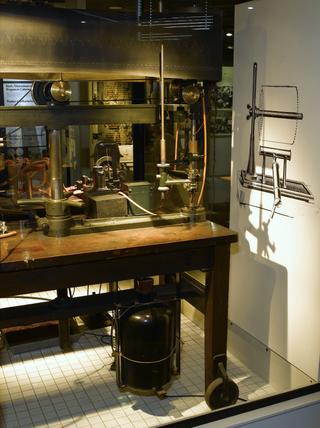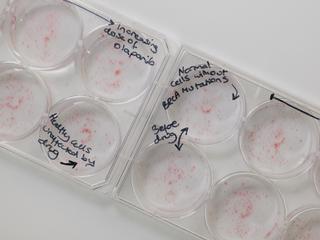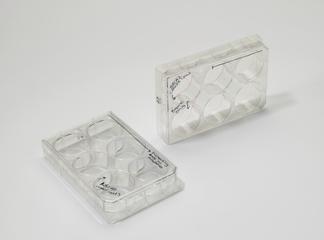
Barometer used during 1953 Mount Everest expedition
- Made:
- 1952-3 in unknown place






Kelvin-Hughes Barometer used for measuring atmospheric pressure, forecasting the weather and determining altitude, used by Dr Griffith Pugh to inform physiological data for and during the Mount Everest expedition of 1953, United Kingdom, 1952-3.
What does it take to climb Everest, the world’s tallest mountain? Climbing at extremely high altitudes pushes the human body to the limits of its endurance. As altitude increases atmospheric pressure decreases. This means that there is less oxygen available – at the summit of Everest atmospheric pressure is about one third of the pressure at sea level. This reduction in oxygen has a huge range of effects on climbers, from difficulty moving to reduced appetites, and from increased fatigue to trouble making complicated decisions. The research of physiologist Dr Griffith Pugh was key to learning how to manage these challenges and successfully summit Everest. Much of the accuracy of his research depended on knowing at what altitude the research was completed. Interestingly, as most attempts to climb Everest take place in the summer when it is warmer, the atmospheric pressure at any given altitude is slightly higher than might be expected when using the standard method for calculating atmospheric pressure used in aviation and pressure chamber research. Having precise data about altitude and atmospheric pressure meant that the results obtained by Pugh on Everest could be accurately compared to previous research carried out using pressure chambers to artificially reduce atmospheric pressure at sea level to mimic conditions at high altitude.
By the 1950s, there had been several attempts to summit Everest and some climbers had got very close, but none had made it. The pioneering research of Dr Griffith Pugh was a key factor in the success of Edmund Hillary and Tenzing Norgay’s climb in 1953. Pugh’s background made him uniquely suited to this work. He was a practising doctor, but also a world class skier. He was selected to represent Great Britain in skiing at the 1936 Winter Olympics, but he was unable to attend due to injury. He also trained soldiers at the School of Mountain Warfare in Lebanon during the Second World War. It was here that Pugh began to research the impact of high altitude and extreme conditions on the body, leading to his work on Everest. Pugh took part in the expedition to Everest in 1953 and the preparatory expedition in the Himalayas in 1952, believing that laboratory research could not accurately recreate the experience of being in these extreme environments. His work established principles about acclimatising to altitude, food and water consumption during climbs, and oxygen usage that continued to be used by climbers for decades.
Details
- Category:
- Laboratory Medicine
- Object Number:
- 2017-61
- Materials:
- metal (unknown) and textile
- Measurements:
-
overall (lid closed): 154 mm x 107 mm x 144 mm,
- type:
- barometer
- credit:
- Simon Pugh




